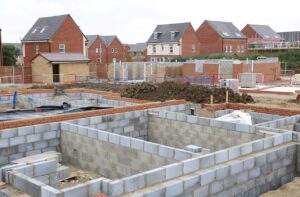The best strategy for first-time developers


Written by Ritchie Clapson CEng MIStructE, propertyCEO
If property is an area that interests your entrepreneurial side, you could go for a quick flip, but that isn’t where the real profits lie. That doesn’t mean you jump in and build an entire housing estate. Something between the two will be a good fit, but wherever you decide to place your efforts, consider profit and risk.
Profit
Assuming you are looking for a 20% return on each project’s selling price, if you want to make £100k, you will need a project where the units sell for £500k. Similarly, if you’re going to make a million, your project will need to have a sales value (a.k.a. gross development value or GDV) of £5m. Most people we train would be looking to create a profit of between £100k and £500k from each project, which places them firmly in the small-scale development category.
Risk
You want to be able to avoid as much risk as possible for a whole host of reasons, not least your ability to sleep soundly at night. Similarly, you will want to make sure you are able to get your projects completed quickly.
How do you achieve this?
My first recommendation is to stick to small-scale developments rather than thinking that doing a project ten times the size would be a good idea. Yes, the bigger project will involve less than ten times the work on your part, but it can easily involve ten times the stress and ten times the risk.
My second recommendation would be to avoid having to apply for full planning permission. You will be relieved to know this does not mean building a block of flats and hoping that no one at the council notices. Instead, it means using permitted development rights (PDRs) to change the use of an existing building without the need to apply for full planning permission.
PDRs are rights granted by the government that allow us, among other things, to convert commercial buildings to residential use without the need for full planning permission. Since 1st August 2021, it has been possible to convert a much wider range of properties into residential without the need to apply for full planning permission. To give you some idea, you can now convert shops, cafes, restaurants, banks, financial and professional services buildings, gyms, light industrial buildings, offices, doctors’ surgeries, medical or health services buildings, creches, day nurseries, and indoor sports centres. That gives us a vast number of small-scale projects to aim for since many of these buildings will be way too small for larger developers to bother with.
Where to look
There are two basic rules to remember when it comes to understanding how to win good property deals:
- Avoid as much competition as possible by looking where other developers aren’t.
- Know how to make more profit from a property than the other people looking at it.
The sweet spot for my money is light industrial. Buildings that house industrial processes and are located in a residential area have an obvious benefit as you don’t want to convert properties that are in the middle of nowhere or on an industrial estate. Many of these properties are little more than four walls and a roof, the idea being to create a large open-plan space that can house whatever business is being run there: printing works, MOT centres, workshops, car repairers, etc.
Most light industrial buildings will be built on a thick concrete slab. This slab will typically extend across the entire floor plate and should be more than sufficient to support a residential building. This means that wherever you want to build a wall, you already have a nice firm base in place.
And most light industrial buildings are open plan, unlike office buildings which tend to have supporting pillars and stairwells dotted around. This makes for far fewer constraints in terms of the layout of your flats. It is relatively straightforward to upgrade the walls, floor, and roof to residential specification, plus your contractor will love you since they can do most of the work inside, under cover (rain isn’t much fun to work in and can even stop play).
The ability to convert to residential using permitted development rights and a lack of competition make these buildings an attractive proposition, plus the small-scale nature of these projects make them ideal for the first-time developer.
ABOUT THE AUTHOR
Ritchie Clapson CEng MIStructE is a veteran property developer of almost 40 years and co-founder of propertyCEO, a nationwide property development and training company that helps people create a successful property development business in their spare time. It makes use of students’ existing life skills while teaching them the property, business, and mindset knowledge they need to undertake small scale developments successfully, with the emphasis on utilising existing permitted development rights to minimize risk and maximize returns.


